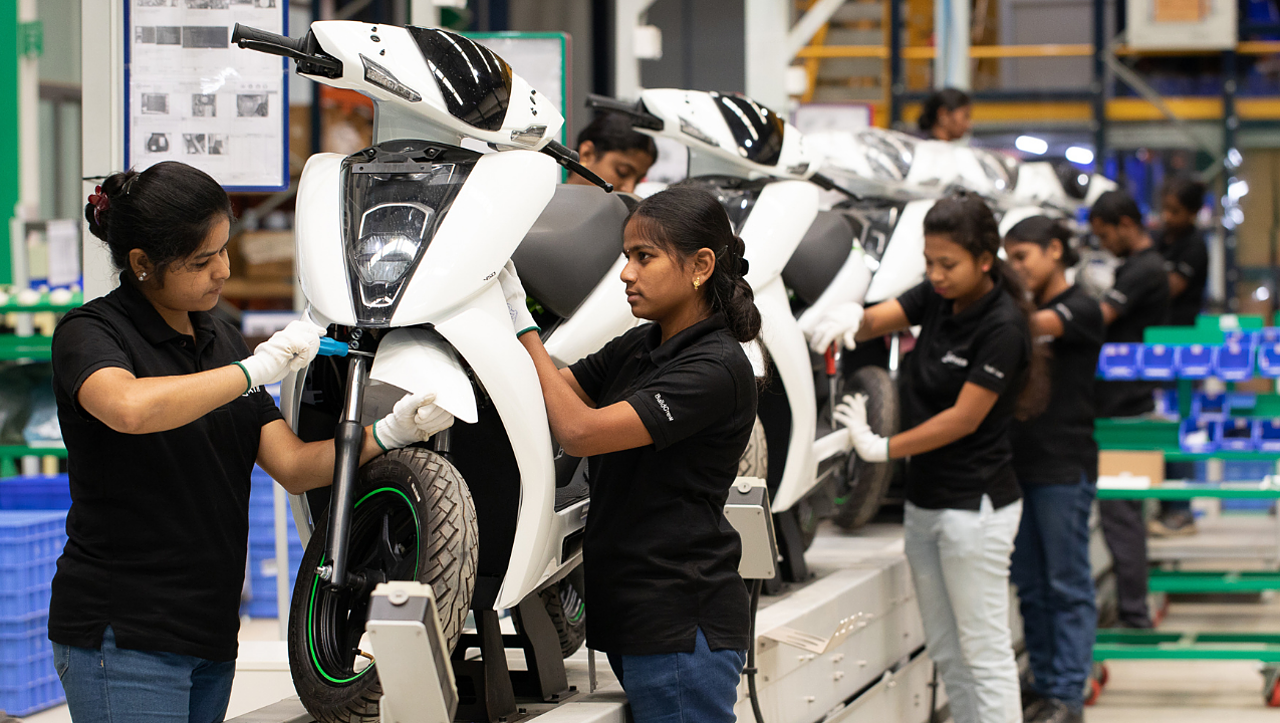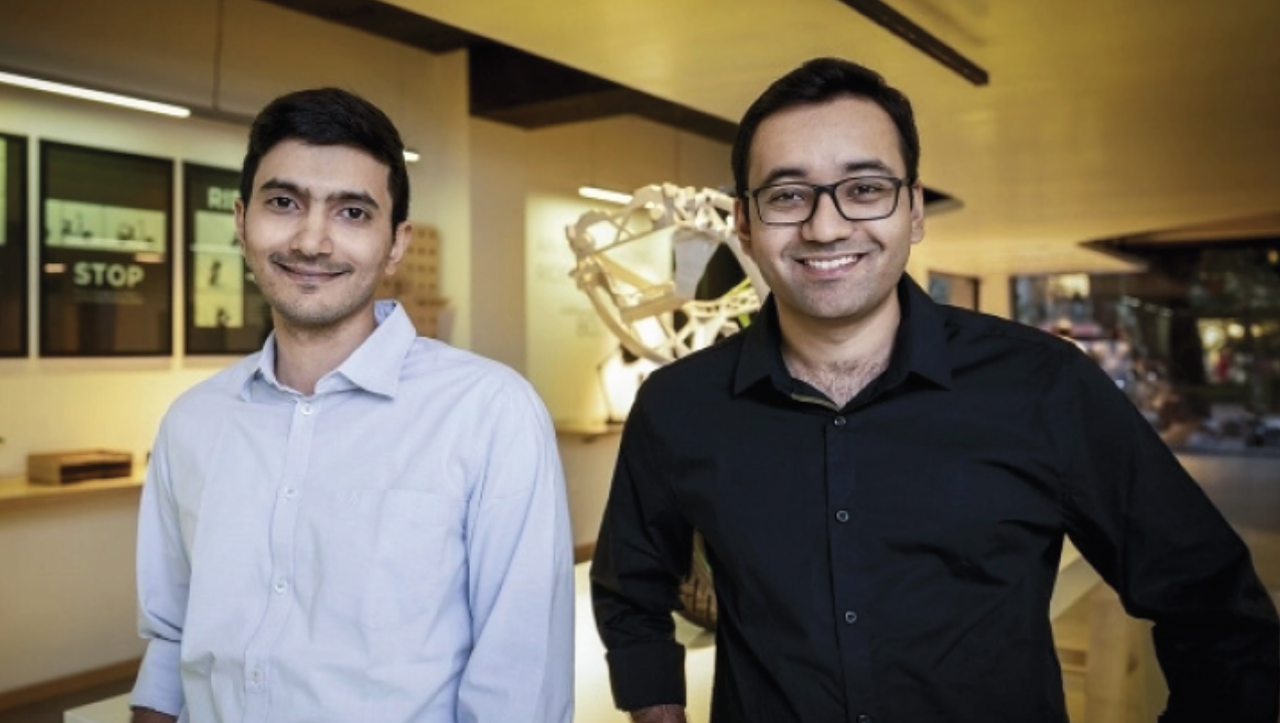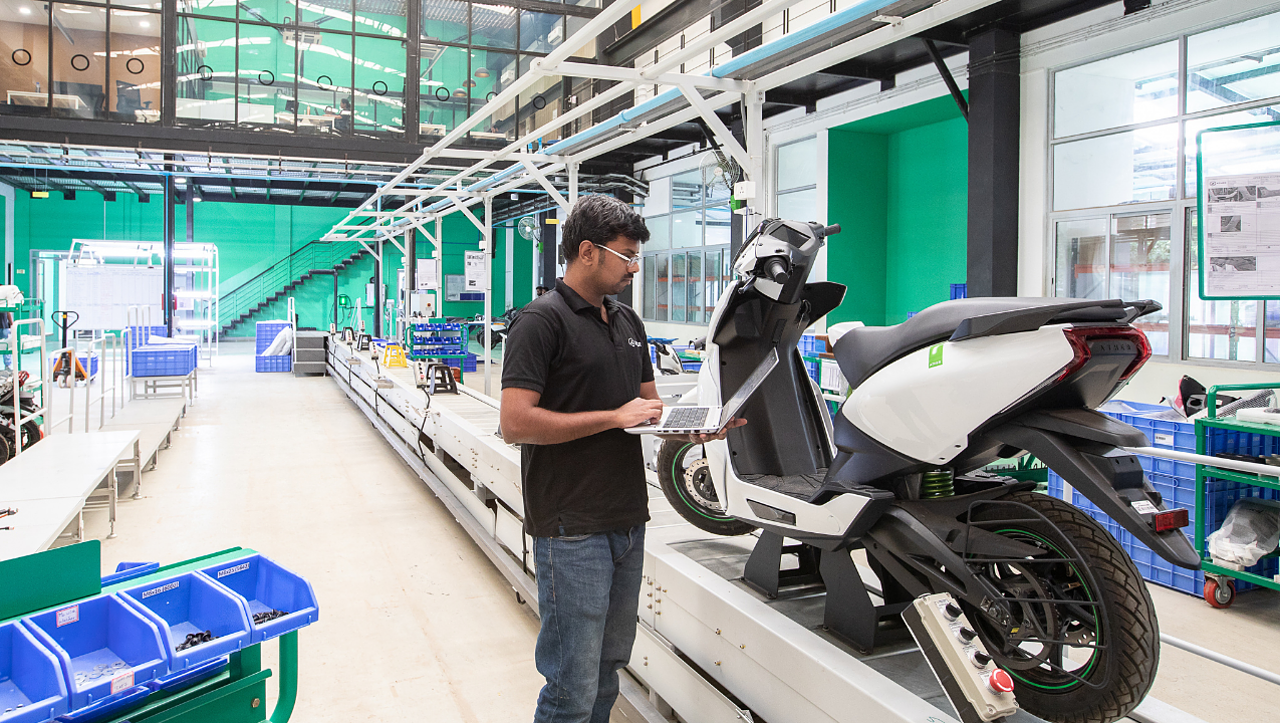
The idea that began brewing in the heads of the founders of Ather Energy since 2009 and transformed into a reality at the IIT Madras Incubation Cell in 2013, drove the duo – Tarun Mehta and Swapnil Jain – to make the first electric two-wheeler Ather 450, with a vision to give customers a competitive choice to ICE vehicles, with reliability, performance and sustainability.
India is the largest two-wheeler market globally, and over 70% of the vehicles on Indian roads are two-wheelers. Hence, Ather’s focus on e2Ws.
Realising that in a sustainable world, all transportation has to be electric and the most powerful way to drive that transition is to build great products at scale, the founders began to think of building an ecosystem – not only focus on the business metrics but also script the need to measure and deepen the impact that their company will have on the ecosystem around them.
This prompted them to publish their first Impact Report measuring the influences of their products, manufacturing process and policies on the community and the ecosystem.
Having undergone a comprehensive assessment using Aspire Impact’s proprietary 4P framework across 250+ impact metrics, Ather Energy has been awarded Aspire Impact’s Gold Leaf accreditation for its overall Impact Management. Interestingly, Ather is the first Indian and second automotive company globally, besides Tesla, to publish an Impact report.
The beginning
Since its inception, the company has been building an ecosystem around charging and a robust supply chain and servicing network, thus stitching up all parts of the customer experience from charging points to end-of-life sales. The drive to this intent was many.

For instance, according to a report by the Centre for Science and Environment, two-wheelers are responsible for emitting more than 32% of air pollutants in Indian cities. Hence, there was a clear need for an electric vehicle (EV), which is sustainable and better in performance and reliability than internal combustion engines, to induce consumers to switch to less polluting forms of mobility.
This is the challenge and mission Ather set for itself. The company has a two-pronged approach to product sustainability. Firstly, it designs high-quality products that are efficient and lasts longer, thus reducing strain on resources and, secondly, reusing and recycling products towards the end of their lives.
The company built a diverse and inclusive workplace with the premise that ‘people are equal, but not the same.’ Diversity and inclusion have been broadened to include the diversity of thought, experience, gender, leadership, language, and culture.
Manufacturing
In the case of manufacturing, the company’s new facility in Hosur, Tamil Nadu, is being built with state-of-the-art design and sustainable features.
Built as a PEB (Pre-Engineering Building) structure, it reduces material usage and reduces logistics and construction costs, leading to relative saving of CO2. Sustainable ridge design is deployed to provide better natural airflow through the roof, and High Velocity Low Speed (HVLS) fans for the assembly line, eliminating the need for air conditioning systems.
Using about 5% of roofing to get natural light helps reduce artificial light requirements in the daytime. The use of high efficiency LED lights helps improve energy efficiency. In-house sewage treatment plant of 38.5 KLD (kilolitres per day) capacity helps recycle an average of 28 kl/day, which is diverted to watering the garden belt and toilet flushes. By 2022, the company plans to utilise 80% of its energy consumption from renewable sources by installing solar panels.
Sales
Each Ather experience centre is built with a sustainable design for efficient air-conditioning and lighting. In addition, the company continues to decrease its environmental footprint through initiatives like the prohibition of hand tissues that led to a saving of 120 kg/month or 1.44 tonne/year, eventually saving over 3.6 metric tonne of CO2 emissions.
Replacing virgin paper with recycled papers for printing helped reduce the virgin A4 paper requirement by 54 kg/month. In addition, it does not allow plastic water bottles and cutleries across the organisation, which has led to a reduction of 5,750 plastic bottles, with 17.5 MT of CO2 emissions saved.
Building a sustainable ecosystem
All these initiatives led the company to boldly take up the challenge and release its first Impact Report, assessed by Aspire Impact, a social enterprise focused on impact leadership & impact ecosystem development.
Developed with a theme of mobilising a new India, the impact captures the sustainability aspect of Ather’s business. It details the company’s impact across four categories – Product, People, Planet, and Policy, including how products have been developed with superior technology that provides Indian consumers with an option for clean mobility without compromising performance.
In 2019-2020, Ather Energy’s vehicles saved 7.5 MT of CO2 emissions (equivalent to 15 years of riding a 125 cc scooter). To date, 40 million km have been ridden that has saved 30 MT of CO2.
The report also talked about the company’s commitment to diversity and inclusion, which has been broadened to include the diversity of thought, experience, gender, leadership, language and culture. It has about 30% women employed in the manufacturing facility, claimed to be the highest in the Indian automotive sector.
The company has devised a two-pronged approach to building a sustainable ecosystem. It has built a vehicle and charging infrastructure platform from scratch and has also focused on helping develop a local supply chain. As a result, the vehicle maker has managed to achieve 99% localisation (except cells) in the vehicle.

Commitment to SDGs
The report further delineated the company’s commitment and contribution towards the United Nations Sustainable Development Goals (SDGs). The ideologies and cultural values extend beyond the organisation; creating a unique and collaborative relationship with customers is a goal that the company exemplifies. Over the years, it has witnessed a strong, growing, active customer community, increasing from 5,000 to over 14,500 members today.
Going forward, the company aims to be in 100 cities with a new product portfolio by FY23 and add more safety features on the product like crash detection & SOS, tow detection, tyre pressure monitoring system, remote diagnostics, etc. In addition, it plans to install 500 charging points across the country during the next fiscal. Ather is also aiming to ensure 80% of its energy consumption is through the use of solar energy and increase the ratio of recycled water to total water consumption by 84%.
Tarun Mehta, Co-founder & CEO, Ather Energy, said, “The impact of our work through our products for the EV market is clear, but building a long-term impact-focused organisation is about more than a few founding product decisions. Just like financial metrics, measuring impact has to be made an institutional process, expanding far beyond just the product and covering people, planet, and policy too. Measuring and publicly sharing the same will help us create a system where in the long term, we will be able to hold ourselves accountable to a public standard and hence constantly improve on the same. While this is just the first report, we are already seeing big leaps in the WIP report for FY21 bringing out the advantage of pushing impact as a company-wide metric.”
Conclusion
Ather’s conviction is that impact measurement, and reporting will not be limited to a note that is published annually. Instead, it is committed to institutionalising impact within its business, and this exercise of impact assessment will help the organisation strengthen its culture of excellence.